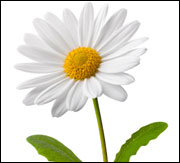Flowers for communion
What does your Flower Communion bloom symbolize?
Tommie O’Sullivan, of Prescott, Arizona, said, “I tend to bring whatever is in bloom in my yard at the time. In New Hampshire, it was usually the sturdy little grape hyacinth in the middle of the front yard. In New York it was usually the time for a Japanese lantern plant to bloom. . . .
“Now we’re in Arizona and we have no flowers in our yard. We live up in the mountains, and are still discovering, after eight years, all of the native plant life. I just can’t bring myself to purchase flowers for the service. I think the communion part of the service is to leave a part of yourself so that others in some small way may know you, or be touched by you. When selecting a flower at church, I usually choose one I don’t recognize, and when I get home I look it up and learn about the flower, so I add to my knowledge. If I don’t see a flower that I don’t recognize then I tend to take the sad flowers, the wilted or torn ones. They deserve to be chosen as much as the fancy ones.”
Emilie Giustozzi, of West Wind UU Congregation in Norman, Oklahoma, wrote, “I always try to bring roses from my garden in honor of my favorite UU hymn, ‘Come Sing a Song with Me,’ which focuses on what Flower Communion means to me: sharing, support, love, and hope.” Mary Ann Somervill, of Church of the Larger Fellowship, chose a yellow rose, a favorite of her mother’s. “She died when I was an infant, so I never knew her, but for many years my father and I would take yellow roses to her grave on Memorial Day. The yellow rose became a special link to the mother I never knew.”
Elaine Yehle Bowen, of the UU Church of Kent, Ohio, said she chooses a daffodil because “it stands tall and true but is still able to bend in the wind showing its flexibility. Its design is so incredibly simple yet elegant and it is so perfectly and spectacularly beautiful, it symbolizes that which cannot be named.”
Kim Cooper, of UUs of San Mateo, California, said, “One year I brought a white daisy from a bush that I had grown from the flower I had picked from the Flower Communion vase the year before.”
Others mentioned peonies, lilies, carnations, and “indigenous things if at all possible.”
For the next issue: What historical Unitarian, Universalist, or UU most speaks to you, and why? Send your answer to world@uua.org.
Comments powered by Disqus







